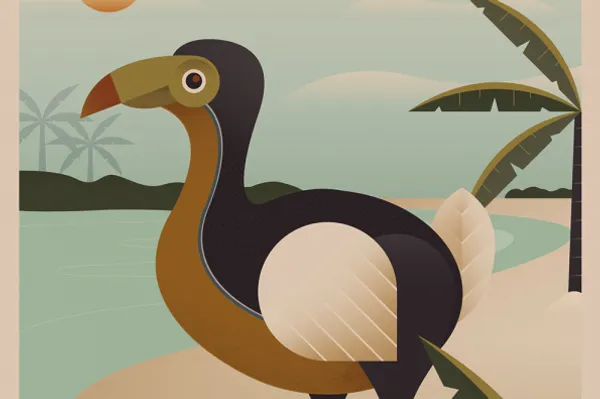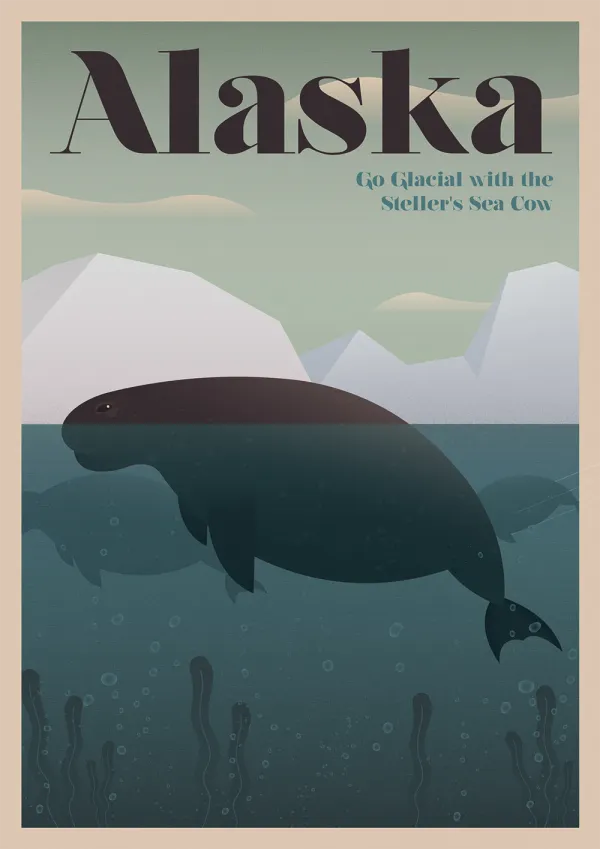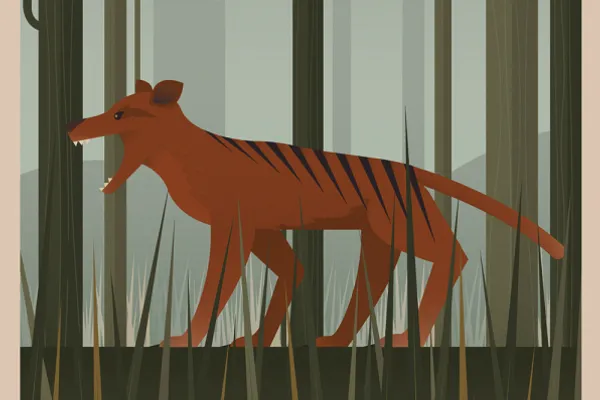Imagine going on a worldwide safari where you could glimpse extinct creatures in their natural habitats, as well as the more familiar tigers, elephants and orcas.
Expedia UKhas beautifully interpreted this idea with a selection of retro images that draw their inspiration from travel advertisements that were all the rage from the 1930s to the 1950s. As well as being stunning to look at, they are also a sobering reminder of some of the wonderful animals that we have lost over the centuries.

Dodo
Perhaps the most iconic of the extinct creatures, the dodo lived on the island of Mauritius. We cannot be 100 per cent sure of its appearance while it was alive, and can only draw conclusions from paintings and illustrations. As theflightless bird evolved in the relative absence of predators, it was completely unafraid of humans, making it easy prey.The last one was killed around 1662.

Golden toad
The beautiful golden toad inhabited a tiny mountainous area in the north of Costa Rica. During breeding season,large numbers of the animals would gather. In 1987, the population plummeted and the species has not been seen since 1989. The habitat is pristine, so it is thought that the chytrid fungus or climate change may be behind the decline.

Moa
The moa was a ginormous flightless bird that could reach heights of 3.6m. It lived in New Zealandwhere its only predator was the Haast's eagle, until the arrival of the first Maori. By 1445, the moa had been hunted to extinction,and the Haast's eagle had died out after becomingdeprived of its main food source.

Steller's sea cow
Today, oceanic explorers might be lucky enough to glimpse a dugong or manatee. But 250 years ago, travellers in the northern Pacific may have laid eyes on the 10m-longSteller’s sea cow. The slow-moving animals were easy pickings for sailors, who killed them for their meat and skin. The last of these gentle herbivores was wiped out by 1768, just 27years after being discovered by Europeans.

Thylacine
It is thought that the thylacine once inhabited mainland Australia and Tasmania, but by the time Europeans were aware of the carnivorous marsupial, it existed only in Tasmania. Once settlers started to graze sheepon the island, they came into conflict with the thylacine, which preyedupon their flocks. In 1830, bounties started to be offered fordead thylacines. But by the beginning of the following century, the animals were so rare that zoos started to collect them. Sadly, the animals didn’t thrive in captivity, and the last one died in Hobart Zoo in 1936.
Follow Science Focus onTwitter,Facebook, Instagramand Flipboard